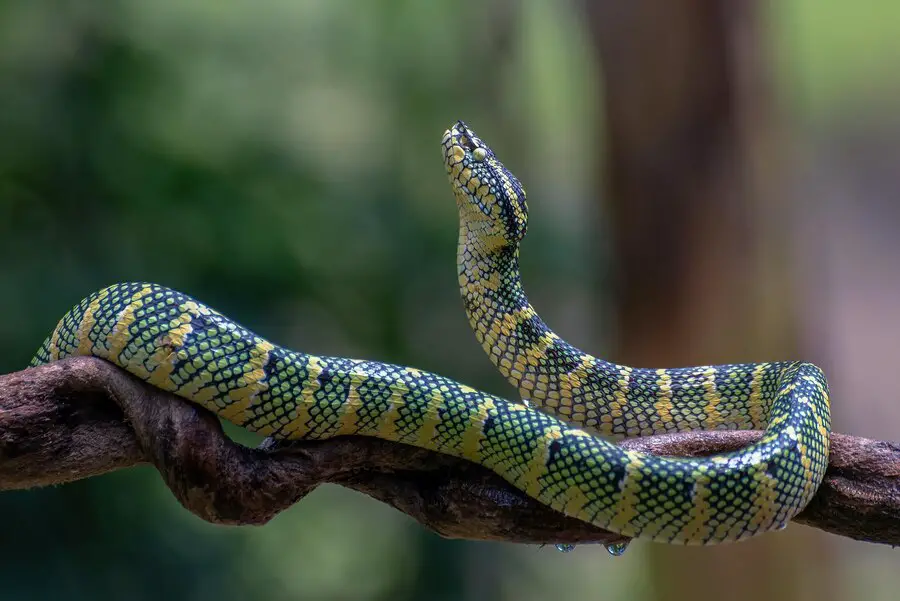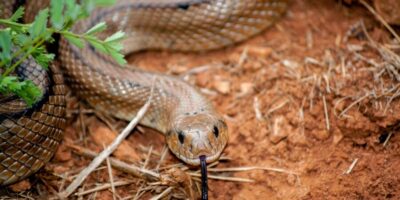Delving into the world of ball python care, understanding their temperature sensitivity is paramount. As ectothermic creatures, ball pythons rely on external warmth to regulate bodily functions. In this exploration, we unravel the critical role of temperature in the well-being of ball pythons, emphasizing the importance of maintaining optimal thermal conditions for their health and thriving captivity.
Maintaining A Proper Temperature
Maintaining a proper temperature is crucial for the health and well-being of ball pythons in captivity. As ectothermic reptiles, they rely on external heat to regulate their metabolism, digestion, and overall physiological functions. Incorrect temperatures can lead to a range of issues, from compromised immune systems to difficulty digesting food. Providing a suitable thermal environment ensures the comfort and vitality of ball pythons, reflecting responsible ownership and a commitment to meeting their specific care requirements.
Optimal Temperature Range For Ball Pythons
For captive ball pythons, maintaining an optimal temperature range is paramount for their health and behavioural well-being. The recommended ball python temperatures range typically falls between 75 and 80 degrees Fahrenheit (24 and 27 degrees Celsius) on the cool side and 88 and 92 degrees Fahrenheit (31 and 33 degrees Celsius) on the warm side. This gradient is essential as it mimics the natural conditions they experience in the wild, allowing them to thermoregulate effectively. Providing these thermal gradients in enclosures ensures that ball pythons can choose and move between different temperature zones, promoting proper digestion, metabolism, and overall physiological balance.
Natural Habitat Of Ball Pythons
Ball pythons, native to sub-Saharan Africa, inhabit diverse environments ranging from savannas to forests. Their natural habitat reflects a combination of warmth and humidity. The snakes thrive in regions with temperatures between 75 and 92 degrees Fahrenheit (24 and 33 degrees Celsius). These habitats typically offer hiding spots like burrows or vegetation, allowing ball pythons to regulate their body temperature and find refuge. Understanding their native environment is crucial for creating a suitable
Temperature-Related Health Risks
Incorrect temperatures pose significant health risks to ball pythons. Suboptimal conditions can lead to hypothermia or hyperthermia, affecting their metabolism and immune system. Signs of temperature-related stress include behavioural changes, decreased appetite, and difficulty shedding. Recognising these indicators is crucial for timely intervention. Ensuring proper thermal environments is essential to safeguarding the health and vitality of ball pythons in captivity, promoting their overall well-being and longevity. conditions in captivity, ensuring the well-being of these remarkable reptiles.
Hypothermia Vs Hyperthermia
Low temperatures, leading to hypothermia, can detrimentally impact ball pythons. It hampers their metabolic processes, causing lethargy, decreased appetite, and susceptibility to infections. On the other hand, high temperatures, inducing hyperthermia, can result in dehydration, heat stress, and even organ failure. Balancing these extremes is crucial for maintaining the snakes’ health and ensuring their physiological functions operate optimally, underscoring the importance of precise temperature regulation in captive environments.
Lethal Temperature Thresholds
Research findings on lethal temperature thresholds for ball pythons reveal critical information for their care. Extreme temperatures, whether too low or too high, can have severe consequences. Lethal temperatures vary, but generally, sustained exposure outside the recommended range can result in organ failure and death. It underscores the importance of vigilant temperature control in captivity. Understanding these thresholds equips caretakers with the knowledge needed to prevent potentially fatal outcomes, emphasising the significance of precise temperature management.
Common Misconceptions About Temperature
Addressing common misconceptions about temperature tolerance in ball pythons is crucial for responsible reptile ownership. One prevalent misunderstanding is that these snakes can withstand wide temperature fluctuations. In reality, ball pythons are sensitive to temperature extremes. Educating enthusiasts on the species’ specific needs helps dispel myths and ensure appropriate care. Recognising the limits of temperature tolerance promotes a more accurate understanding of ball python behaviour, fostering a healthier and more comfortable environment for these captivating reptiles in captivity.
Monitoring And Controlling Temperatures
Monitoring and controlling temperature is paramount for the well-being of captive ball pythons. Utilising accurate temperature measuring devices, such as digital thermometers, ensures precision in maintaining the recommended temperature range. Regular monitoring allows for prompt adjustments, preventing potential health issues. Employing strategies like heat mats, ceramic heaters, or thermostat-controlled heat sources aids in creating a stable and comfortable environment. Consistent temperature regulation is key to promoting the overall health, digestion, and physiological balance of ball pythons in captivity.
Suitable Thermal Environment
Heat Sources: Use appropriate heat sources, such as under-tank heaters, heat lamps, or ceramic heaters, to maintain the desired temperature gradient.
Thermostats: Employ thermostats to regulate and control the temperature accurately, preventing overheating or chilling.
Hide Boxes: Provide hide boxes on both warm and cool sides to enable the snakes to self-regulate and feel secure.
Substrate Choice: Select an appropriate substrate that retains heat, aiding in maintaining stable temperatures.
Regular Monitoring: Regularly use reliable thermometers to monitor temperatures, adjusting as needed to prevent extremes.
Seasonal Considerations
Seasonal considerations play a vital role in the well-being of ball pythons. Exploring how temperature requirements may shift during the winter and summer is essential. Care practices should be adjusted accordingly, with additional heating during the colder months and cooling measures in the heat of summer. Understanding and responding to these seasonal variations ensures a comfortable and healthy environment for ball pythons, promoting their overall welfare and physiological balance throughout the year.
Case Studies and Real-Life Examples
Examining case studies and real-life examples provides invaluable insights into the direct impact of temperature mismanagement on ball pythons. By sharing experiences where improper temperatures had negative effects, such as health issues or behavioural changes, we gain a practical understanding of the consequences. Learning from both mistakes and successes in maintaining optimal temperatures offers a nuanced perspective on the complexities of reptile care.
These real-world scenarios underscore the importance of a proactive approach to temperature management in captivity. Encouraging caretakers to be vigilant, responsive, and well-informed fosters a healthier and more conducive environment for the well-being of ball pythons in captivity. It reinforces the idea that successful snake husbandry goes beyond theory, requiring continual observation, adjustment, and a commitment to meeting the specific needs of individual snakes in order to ensure their thriving and longevity in captivity.
Conclusion
In conclusion, our exploration into the temperature requirements of ball pythons highlights the critical role of maintaining optimal conditions. From lethal thresholds to seasonal adjustments, temperature profoundly impacts their well-being. Reiterating this importance, responsible ownership involves meticulous temperature management. Continuous education and awareness empower caretakers to provide the best care for these captivating reptiles. As stewards of their environment, let’s ensure that our ball pythons thrive through a commitment to precise and attentive temperature control.




